Many small business owners feel intimidated when they hear the word Facebook ads. They may imagine putting down thousands of dollars in advertisements, and do not want to take the risk. The reality, however, is far from what is feared. On the contrary, Facebook ads are an affordable way to get people’s eyes on your brand without needing a large budget. We will go over the costs for setting Facebook ads and ways in which you can reduce costs.
What is the Facebook Ads Cost?
Facebook uses what is called a bidding system to see who gets priority and the charge they will place on the ad. The bidding system is to weed out ads that an audience may not be interested in. If Facebook displayed all ads equally, then the platform would be inundated with them and it would make browsing less enjoyable.

Keeping your ads fresh is a factor in keeping Facebook ads cost low. Don't annoy your audience.
Thus they created a bidding system to pick the best ads of the bunch, and that is due to a number of factors that we’ll get into later in the article. One of those factors is cost, and depending on the bidding strategy, you can get chosen. So what is the optimal cost? Let’s first review the various ways you can measure cost, then go over the average cost for ads.
Measures of Cost
There are various methods of measuring the cost of an ad, which we will list below:
Cost Per Result – This measures the cost and the result you get from the measurement. To calculate, simply divide the amount spent/profit.
Cost per Impression – This is the total number of views, or impressions that your ad has gotten per amount spent. To calculate, divide the amount spent/number of impressions x 1000
Cost per Click – This is the amount you pay for every click on your ad. To calculate, divide the total cost/number of clicks.
Average costs
The average amount to expect is around $1.72 per click according to wordtream, though it can vary from 50 cents to 2 dollars per click. Facebook also gives you the option to set a daily cost with the minimum being 1 dollar, which can generate up to 76 visits per day. For impressions, expect to pay somewhere around 7.19 dollars for every 1000 impressions. How are these costs factored?
Factors For Cost
There are many factors that Facebook uses to determine the cost of an ad:
Ad Placement
Ad placement is where the ad is located. Places where you can insert your ad includes:
- The Search Bar
- In-stream videos
- Marketplace
- Instant Articles
- Stories
- Right Column
- App
- Messages
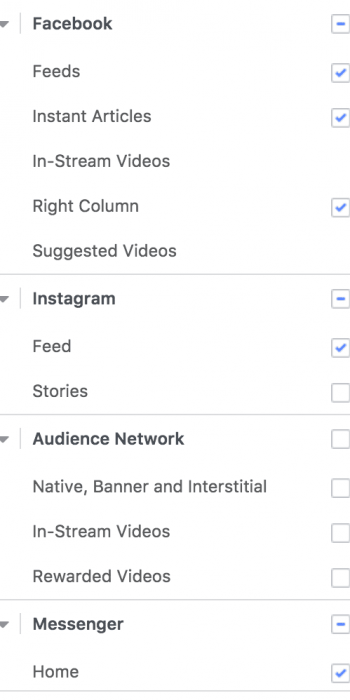
Target Audience
Facebook can also charge more money based on who you are trying to target. This can include their tastes, age-range location etc, in other words, your demographics. For example, placing an ad in China would cost less than placing an ad in the United States. [Insert Statistic on prices from around the world]
Industry
Facebook also charges more if you are in a specific industry. An ad for a company in the legal sector, for example, might cost more than an ad in the travel and hospitality sector potentially due to the higher click-through rate (CRT). CRT is how likely someone is going to click on your ad. Here is a chart by Wordstream that shows the average click-through rate for each industry:
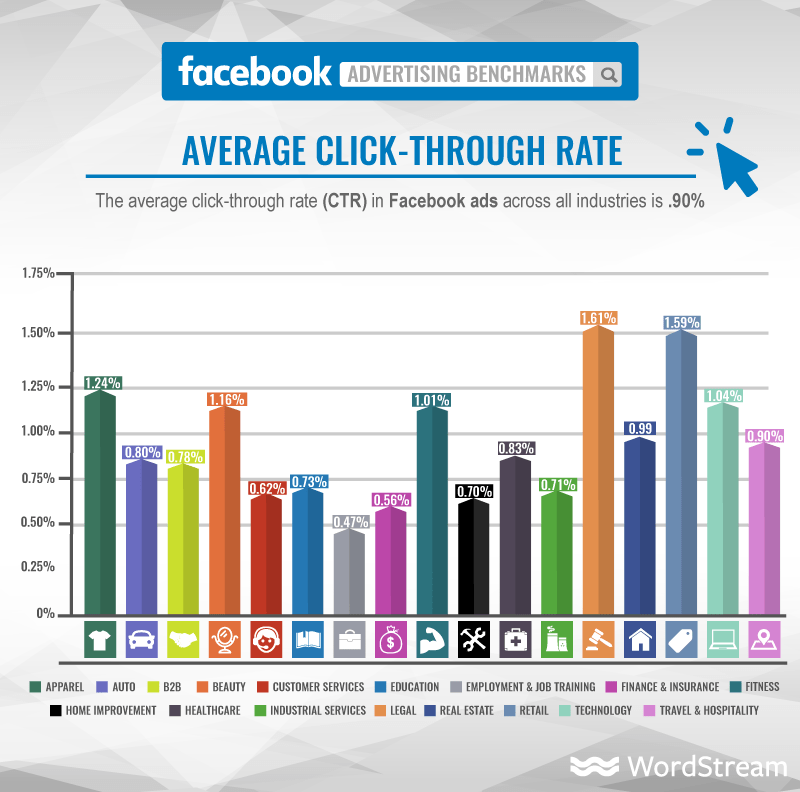
Bidding Strategy
How you bid is also a factor to how much you will be paying overall. Choosing to cap your bid can help set an optimal bid, but it can come at a higher cost. Bid cap allows you to set a maximum bid across all auctions. However, it is recommended for those that know how to set the best bid. In any other case, it is recommended that you choose the lowest bid overall.

Ad Objective
There are different types of objectives you can choose that can also have an impact on the cost of ads. Some of them include:
Awareness: You can choose to increase the audience’s awareness of your brand. Many may engage with your posts, but it may take a while for them to visit your site and make a purchase.
Consideration: You can choose to have more people engage with your post and drive more traffic to your website, though they may not make a purchase immediately.
Conversions: You can also set a goal to convert more visitors and purchase your products. Though you may get less visitors to your site, more of them may purchase a product from your website.
Relevance Score
Facebook uses an algorithm to determine how relevant your ad may be to a target audience. They assign a score from 1 to 10 with 1 being the least relevant and 10 being the most relevant. Once an ad is served 100 times, a score is assigned. Here is what factors into a relevance score:
- Is the audience engaging with your content?
- How well does the ad convert?
- What is the quality of the ad served?
Time of the year
Ads can be more expensive depending on the time of the year. Certain holidays like Christmas or Thanksgiving may come up and drive the cost of ads up. The plus side is that more traffic may come in during that time of year, which means that your ad may have a higher chance of generating a conversion. Marketing quarters can also affect the cost, with Quarter 2 experiencing the lowest cost and Quarter 4 experience the highest cost due to the holidays. Here is a graph by AsEspresso that illustrates the cost per click by month for 2021:
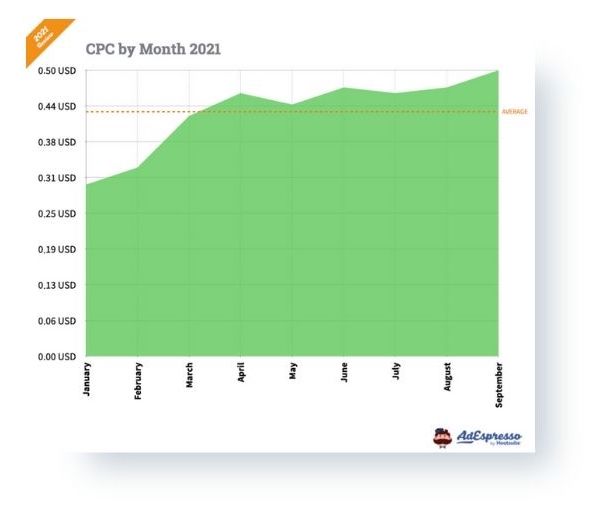
Ways to reduce bidding cost
You can reduce the overall cost of your ads by doing the following:
Implement Manual Bidding Strategies
You can set a cost cap for your campaign, and then implement your bidding cost manually. That way, you pick whether or not to pay a certain amount based on what ad you plan to show.
Target The Right Audience
Try to narrow down your audience and make it as specific as possible, in other words, your demographics. You can narrow down your demographics based on:
- Age range
- Location
- Interests
- Profession
Personalize Ads
You can also personalize your ads and make your audience feel special. For example, you could mention your audience’s city and congratulate them if their sports team won any championships. You can also mention any good news regarding their industry such as the number of new jobs open.
See if there is an overlapping audience
You can also check if any of your audiences overlap, and make sure that you create one ad to target them both instead of creating separate ads and spending twice as much money. Facebook has a neat tool to help you analyze this.
Increase Your Relevance Score
You can also increase your relevance score by improving your ad quality and generating more website visits. Include any call to actions within your ads to entice people to click, and avoid being generic.
Test your ads
Perform any A/B tests to see which ads are generating the most engagement and traffic. To access the A/B setting, simply go to the Experiments section of Facebook and select A/B test.
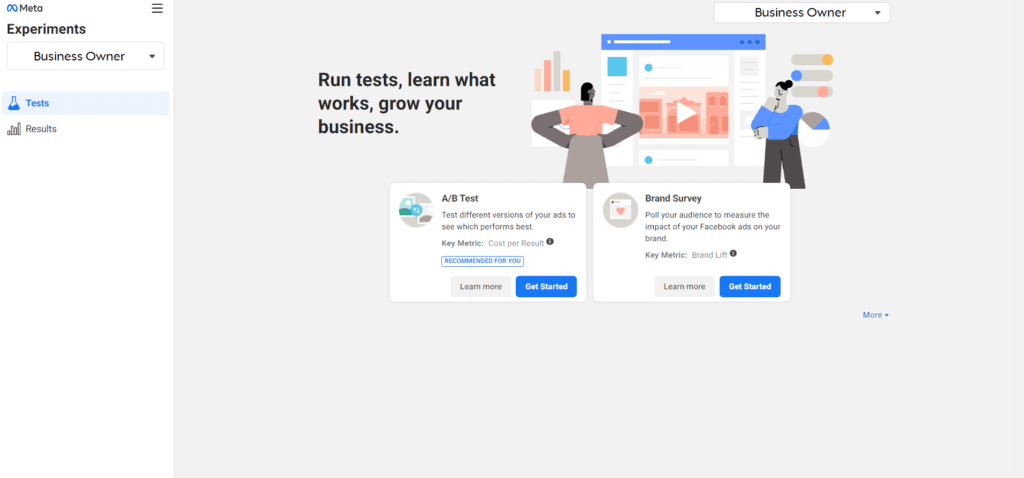
Facebook gives you plenty of options to customize your A/B testing. You can choose whether you would loke to test campaign groups, campaigns or ad sets and you can also choose which metric to test such as CPR
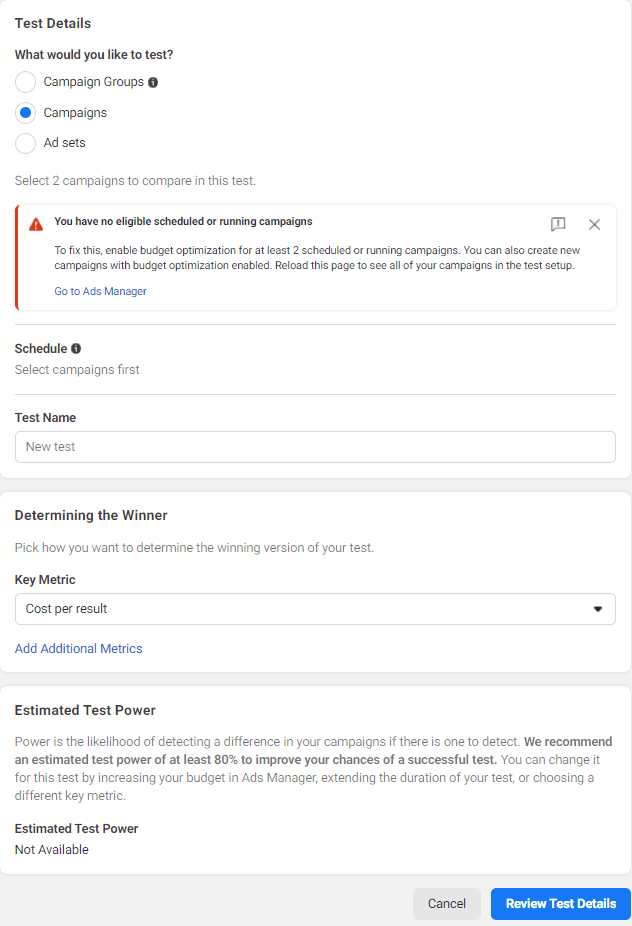
Update your ads
Nobody likes to see the same ad over and over again. Repeating ads can cause fatigue, and you should aim to create new ads. You can also limit the number of times that someone is shown an ad, and you can update your ads twice a month with fresh content.
Retarget Your Audience
You can also target people based on their browser cookies. When you show an ad to someone who visited your site or made a purchase, they will be familiar with your brand. If they already purchased a product, they would be highly likely to purchase another.
Let's recap
In order to keep ads low, Facebook determines how relevant your ads is by assigning a relevancy score from 1 to 10. To achieve a high relevancy score, you have to make your ads as targeting as possible, and it has to be high quality. Other ways to reduce your cost is to cap your bids and use manual bidding to set your own costs. You can also avoid posting on certain times of the year to avoid high costs. We hope you enjoyed this article, and if you want to check our blog, check it out at coach.today/blog!




